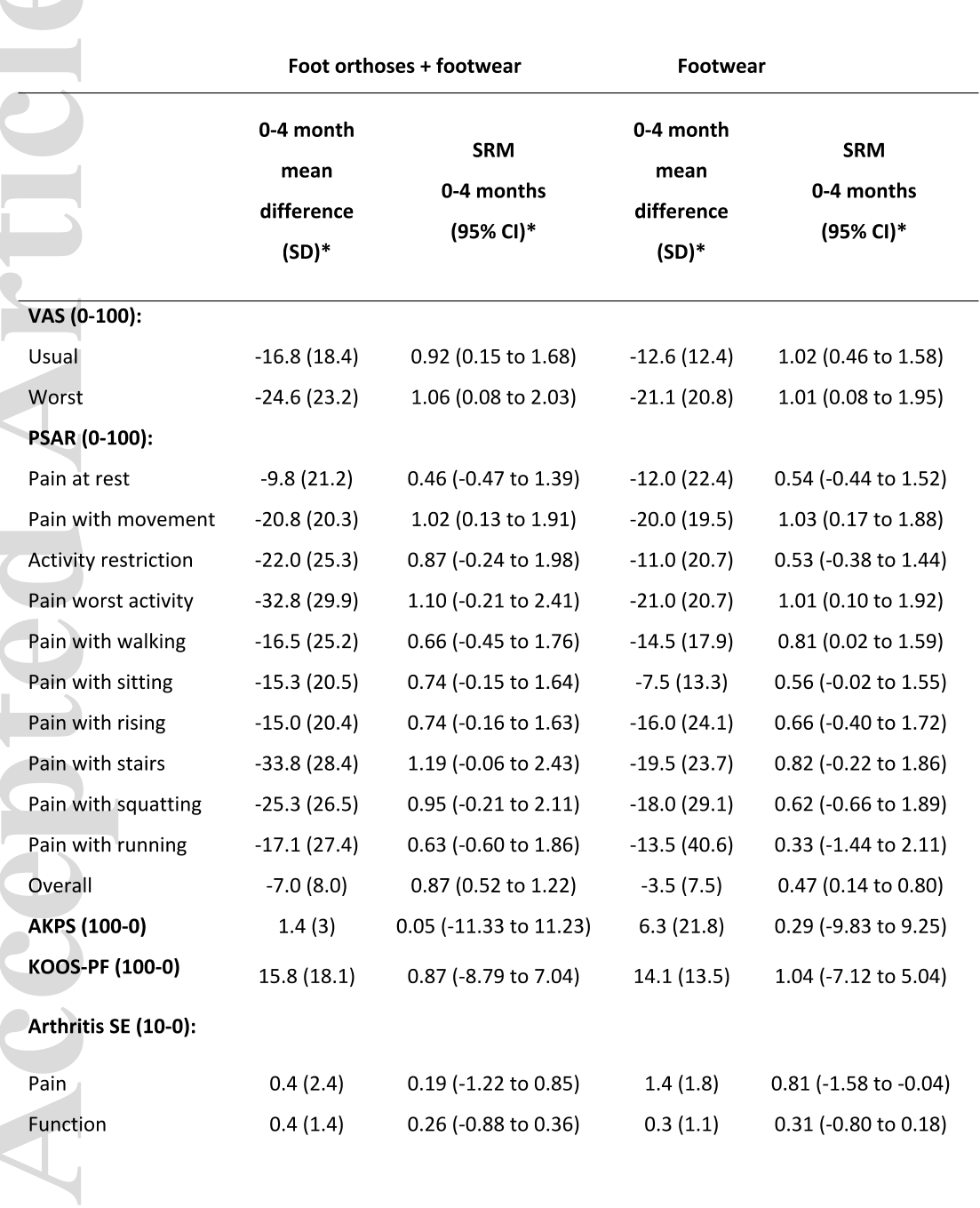




Did you find this useful? Give us your feedback









2 citations
1 citations
193 citations
...Additional secondary outcome measures included the following: 1) VAS for pain severity during different tasks (22); 2) the Anterior Knee Pain Scale (AKPS) (23); 3) the Knee Injury and Osteoarthritis Outcome Score subscale for patellofemoral pain and OA (KOOS-PF) (24); 4) the PainDETECT Questionnaire (25); 5) the International Physical Activity Questionnaire (IPAQ); 6) the Medical Outcomes Study Short Form 36 (SF-36) health survey (26); 7) the EuroQol 5-domain measure (EQ-5D) (27); 8) the Tampa Scale for Kinesiophobia (TSK) (28); 9) the Arthritis Self-Efficacy Scale (ASES) (29); and 10) the Hospital Anxiety and Depression Scale (HADS) (30)....
[...]
...Of the other secondary outcome measures completed in hard copy, 80% of the PainDETECT Questionnaire, the IPAQ, and the Satisfaction With Treatment questionnaires were completed, while 83% of the HADS and 85% of the EQ-5D were completed (see Supplementary Table 1, available on the Arthritis Care & Research website at http://onlin elibr ary.wiley.com/doi/10.1002/acr.24098/ abstract)....
[...]
190 citations
156 citations
152 citations
...crepitus was commonly diagnosed as chondromalacia patellae (33), with arthroscopic debridement of the joint a common intervention (34)....
[...]
...3 Duration of symptoms <3 months 0 0 3–6 months 1 (5) 2 (9) 6–12 months 2 (8) 0 1–2 years 2 (8) 1 (5) >2 years 19 (79) 19 (86) Crepitus 22 (92) 20 (91) Occupation Sedentary 7 (29) 10 (46) Active 9 (38) 4 (18) Not employed 8 (33) 8 (36) Tertiary education completed 20 (83) 13 (59) Physical activity <2 hours per week 5 (21) 4 (18) 2....
[...]
132 citations
...Worldwide, osteoarthritis (OA) is a leading cause of musculoskeletal pain and disability (1), most frequently affecting the knee (2)....
[...]